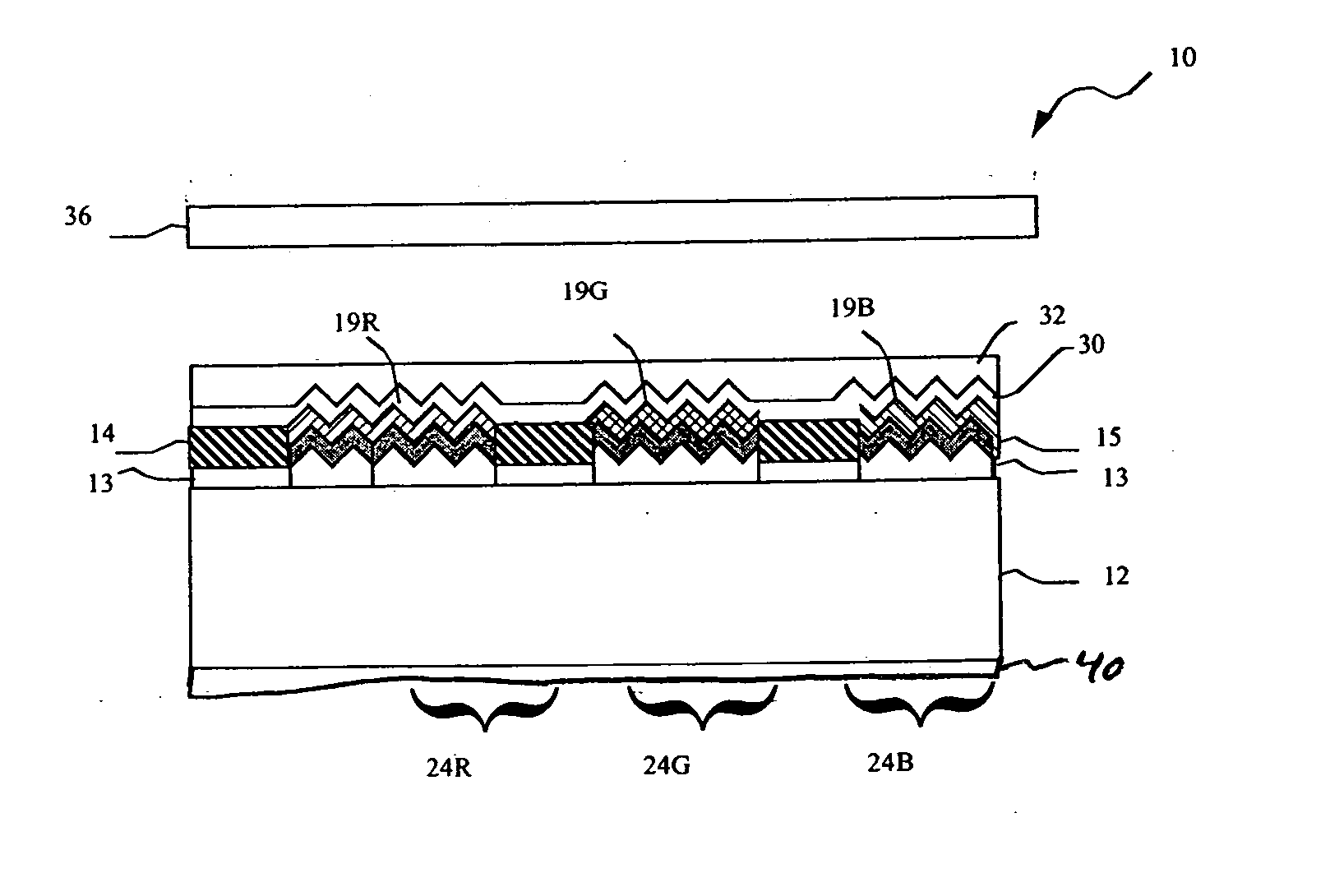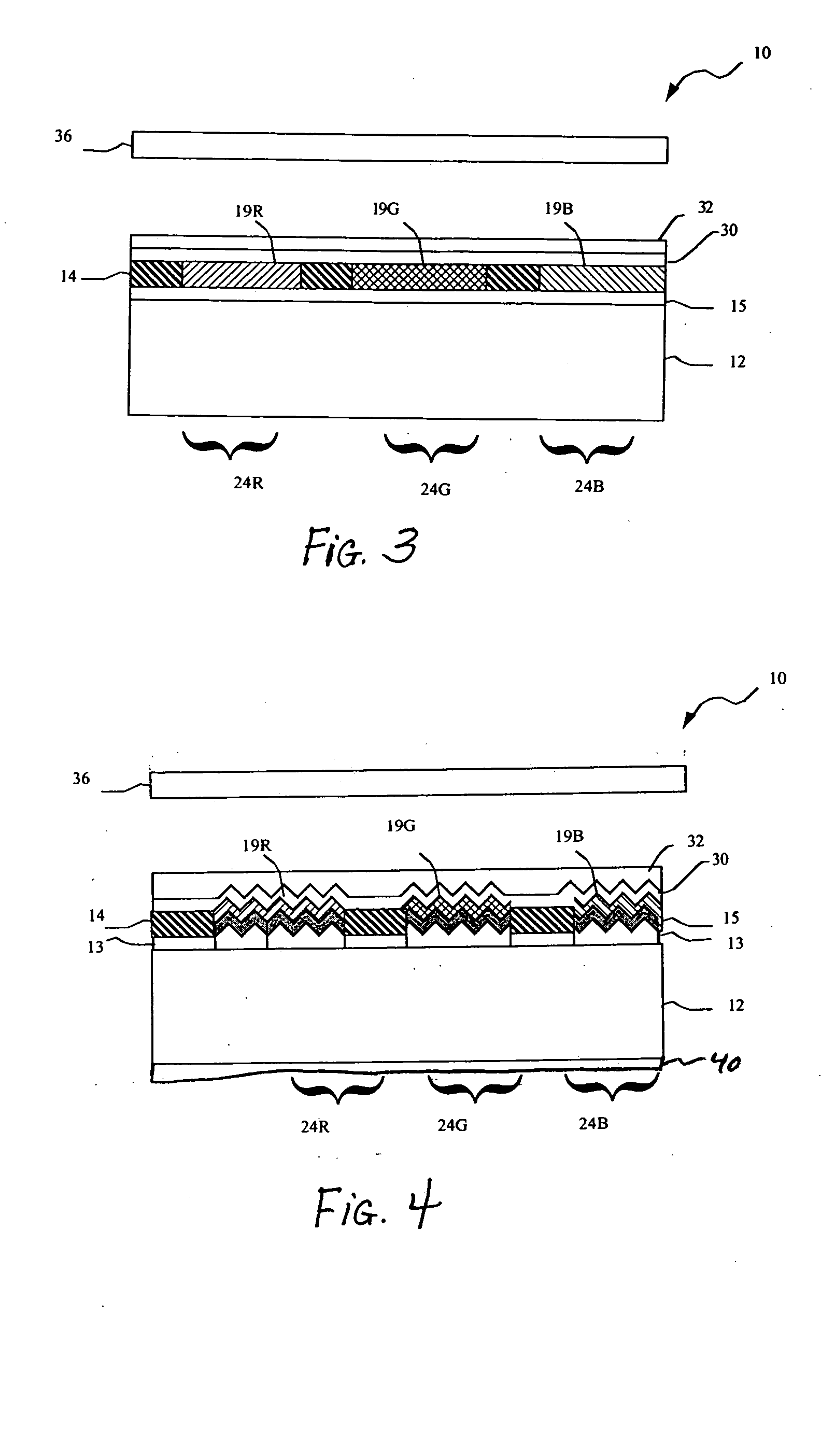Organic polarized light emitting diode display with polarizer
a light-emitting diode and organic technology, applied in the direction of discharge tube luminescnet screen, discharge tube/lamp details, organic semiconductor devices, etc., can solve the problems of reducing the reflectance of ambient light from the surface, emitted light may be lost to 90 %, etc., and achieves higher contrast and higher efficiency
- Summary
- Abstract
- Description
- Claims
- Application Information
AI Technical Summary
Problems solved by technology
Method used
Image
Examples
Embodiment Construction
[0012] Referring to FIG. 2, a prior art top emitting OLED display device 10 includes a substrate 12, and a thin film transistor (TFT) active matrix layer 14 comprising an array of TFTs that provides power to OLED elements. A patterned and planarized first insulating layer 16 is provided over the TFT active matrix layer, and an array of first electrodes 18 are provided over the planarized insulating layer 16 and in electrical contact with the TFT active matrix layer. A patterned second insulating layer 17 is provided over the array of first electrodes 18 such that at least a portion of the each of the first electrodes 18 is exposed.
[0013] Over the first electrodes and insulating layers are provided red, green, and blue-emitting organic OLED elements, 19R, 19G, and 19B, respectively. These elements are composed of further layers as described in more detail below. Herein, the collection of OLED elements, including hole injection, hole transport, and electron transport layers may also ...
PUM
 Login to View More
Login to View More Abstract
Description
Claims
Application Information
 Login to View More
Login to View More - R&D
- Intellectual Property
- Life Sciences
- Materials
- Tech Scout
- Unparalleled Data Quality
- Higher Quality Content
- 60% Fewer Hallucinations
Browse by: Latest US Patents, China's latest patents, Technical Efficacy Thesaurus, Application Domain, Technology Topic, Popular Technical Reports.
© 2025 PatSnap. All rights reserved.Legal|Privacy policy|Modern Slavery Act Transparency Statement|Sitemap|About US| Contact US: help@patsnap.com



